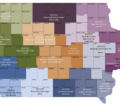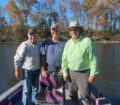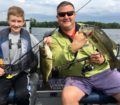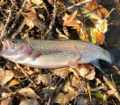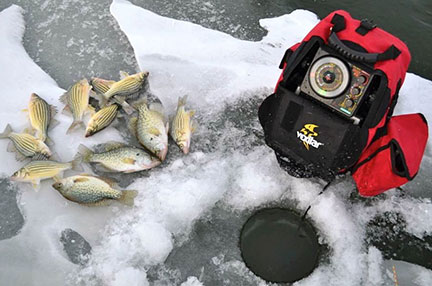By Steve Weisman
Outdoor Editor
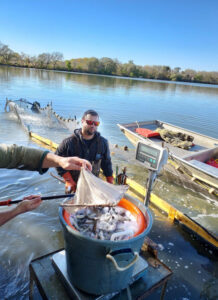
(Photo courtesy Iowa DNR) Adding more fingerlings to the basket for weighing and then transporting to the trucks with oxygenated tanks.
During my weekly outdoor radio show (Following the Great Outdoors) on KILR-95.9 FM, this past Friday, I had the opportunity to have Mike Hawkins, Iowa DNR Fisheries Management Biologist in the Spirit Lake District on as my special guest. He and his team manage public fishing waters in Clay, Emmet, Dickinson, Lyon, O’Brien, Osceola, Palo Alto, Plymouth and Sioux counties. Our discussion included looking at the incredibly successful shallow water lake management program and about their special walleye fingerling netting and subsequent release into lakes that last spring’s walleye fry release didn’t do as well.
Shallow lake restoration update
For the past 17 years, the Iowa DNR has worked yearly to “turn the switch” on shallow water lakes. Once healthy and vibrant ecosystems, for a variety of reasons have become nothing but a shell of what they once were. Most have become devoid of plant life, have very poor water quality and are overrun by rough fish such as bullheads and carp.
The good news is through an aggressive lake restoration plan, these water bodies are brought back to life by “turning the switch.” To “turn the switch” is usually at least a three-year process that most often takes a drastic drawdown (simulating a drought situation), an elimination of the rough fish and a chance for the vegetation to rejuvenate itself. This is followed by refilling and native fish stockings.
In northwest Iowa, several shallow water lakes are at different stages of this renovation. Renovation of Little Swan Lake, a 371-acre shallow water lake north of Superior, has been a longer process with work beginning 2016. Initially, success was limited because of several consecutive wet years.
However, now in 2023, the fruits of the labor are showing with excellent water quality, good emergent vegetation and a growing fish population of perch, bluegills, northern pike and largemouth bass. The fish have reached angler-keepable size. Duck hunting has also improved on the connecting slough to the west of the lake.
Three other lakes Elk Lake (260 acres), Diamond Lake (143 acres) and Trumbull Lake (1183 acres) have received fish and are approaching angler acceptable size. However, they are about a half a year behind Little Swan Lake. Elk and Diamond lakes have been stocked with largemouth bass, bluegills perch and northern pike, while Trumbull Lake has been stocked with perch and northern pike.
West Swan update
West Swan (379 acres), which is located southeast of Gruver, is just into the renovation stage and is currently in a drawdown. Before the drawdown, the DNR was able to utilize adult perch netted in West Swan Lake for stocking in the (above) lakes.
A carp barrier has been constructed between Ingham Lake and West Swan Lake and new drawdown structure is being installed at the outlet of West Swan Lake. The lake is currently drawn down about 3.5 feet. According to Hawkins, during the hot weather this past summer, a mid-summer rough fish kill took place. Following that summerkill, a host of raptures including eagles and turkey vultures appeared to feast on the dead fish. In addition, an array of shorebirds have also been frequenting West Swan Lake enjoying the exposed mudflats.
Although it did not kill all the carp and bullheads, it did make it to the point that Hawkins is hoping to get a good natural winter winterkill. Oxygen checks will be made periodically to determine how the natural winterkill is working. If needed, spot chemical applications could be made if some survivors are found.
Native fish will be stocked and the lake will hopefully be refilled by late 2024.
Relocating walleye fingerlings
Many anglers often ask, “Where the DNR raises its fry to fingerling size?” Some are raised at the Spirit Lake Hatchery, but the DNR also uses Welch Lake, a 60-acre lake as a big rearing pond. Walleye fry are introduced in the spring and then netted in the fall and re-stocked in lakes where the spring fry stocking has not produced as well as desired. Two lakes this year for stocking of fingerlings are East Lake Okoboji and Lost Island Lake. For some reason, these are the only two lakes in the Spirit Lake district that are in need of fingerling stocking. Although it won’t fill the loss of this year’s fry, the hope is that the fingerlings will help fill the gap.
Just this past week DNR personnel spent a day seining 86,000 fingerlings (6-7”). That was approximately 5,800 pounds of fingerlings captured, weighed in baskets and put in aerated tanks on trucks.

